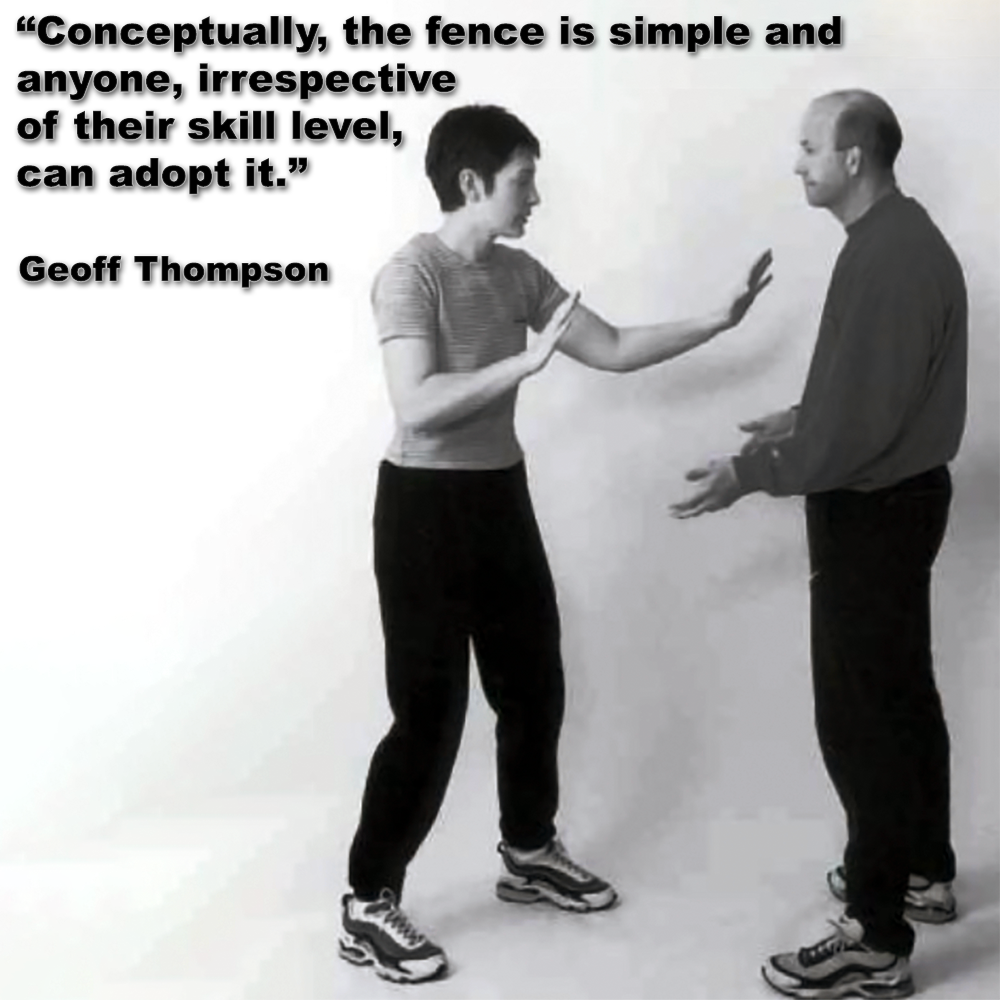
Let’s be clear, self-defense is NOT about brawling. It’s about preventing confrontation and staying safe. There’s nothing to gain and everything to lose by getting pulled into unnecessary fights. So remember this; avoidance is your best self-defense tool.
.
We know from previous articles that having a static high guard doesn’t translate well to real-world situations. Why? (To reiterate) Either, you are so close that BOTH HANDS SHOULD BE WORKING, or you are far enough apart from your assailant that you should be ESCAPING.
.
Standing with a high guard while someone approaches is unrealistic. You’re not sparring; you’re trying to protect yourself.
.
There is NO sparring with each other. There is NO waiting for an assailant to throw a strike while you have your hands up.
.
However, there is a strategy the we can utilize if immediate escape is not on the cards. This strategy, is called the “Fence.”
.
The Fence embodies preemptive and strategic positioning, establishing a psychological and tactical boundary between you and a potential threat.
.
This position, is a proactive measure, aiming to deter aggression and if necessary provide a way for effective preemptive responses.
.
The primary purpose of the Fence is to create a safe zone around yourself. This zone enables early detection of potential physical threats and can help you make swift and decisive action.
.
By assuming a non-threatening yet assertive posture, any possible assailant can see that you’re not an easy target, creating a visual, verbal and physical barrier.
.
Unlike a high static guard, your arms should be outstretched, palms facing the potential threat. If someone ignores your verbal warnings and closes in, you have justification to defend yourself (always within the bounds of the situation).
.
Your default response, to someone aggressively closing on you to the point that you can touch them, is to respond physically in some manner – of course the level of force used being entirely dependent upon the circumstances.
.
However, and this is vitally important, this position should NOT be fixed, static, waiting for something to happen. You should be moving, you should be active….. both hands should be working.
.
Your hands should be moving while talking, trying to vocally de-escalate, allowing your hands to do what they naturally do….. to emphasize your words.
.
You have to consistently maintain sufficient distance from an unknown and potentially violent contact in such a manner, that the assailant finds it difficult to get close enough to initiate an assault.
.
There are multiple reasons that I think the fence is important and is a viable position to use in self-defense. It establishes a boundary, an imaginary fence (hence the name) between the assailant and me.
.
An important part of this strategy – if you have NO CHOICE but to use force, is the use of verbal distraction or questioning. Exploiting an attacker’s hesitation with a question can create a window for preemptive action….. giving you the opportunity to escape.
.
Further, adding clear and firm commands such as; “back off”, also indicate your readiness to protect yourself and refuse to be a victim.
.
Remember that being aware of your surroundings, avoiding dangerous situations, and de-escalating conflict are always your top priorities. But if immediate escape isn’t possible, while not a universal remedy, the Fence can offer you a proactive means to protect yourself, while you are actively looking for escape routes and safety.
.
“Conceptually, the fence is simple and anyone, irrespective of their skill level, can adopt it.” – ‘The Fence – The art of protection’ by Geoff Thompson
.
.
Photo Credit & with thanks to Geoff Thompson
.
.
